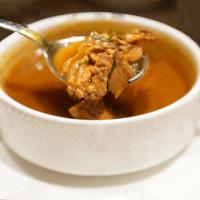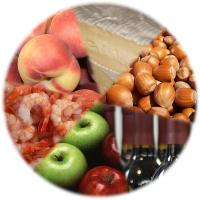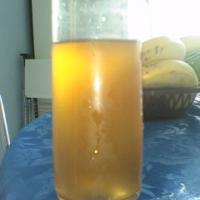Lose Weight > Weight Loss Tips > Low Carb > Still Eat Conventional Meat Or Poultry? Preservatives, Antimicrobials, Antifungals, And Viral Sprays
Still Eat Conventional Meat Or Poultry? Preservatives, Antimicrobials, Antifungals, And Viral Sprays
70 percent of all beef and chicken sold in the United States, Canada, UK and Australia and many other countries contain a growing number of preservatives, meat glues, and antibacterial/antifungal/antiviral sprays. They also are commonly treated with carbon monoxide gas injections to make meat appear more fresh than it actually is.
Synthetic preservatives are added to 70 percent of all factory farmed meat and poultry to prevent spoilage, rancidity and mould growth.
Sodium Benzoate, Sodium Proprionate and Benzoic Acid
The Food Safety and Inspection Service (FSIS) has amended regulations that once banned the use of sodium benzoate, sodium propionate and benzoic acid in meat and poultry products, the Food and Drug Administration has announced.
In combination with ascorbic acid (vitamin C, E300), sodium benzoate and potassium benzoate form benzene, form known carcinogens. If a individual happens to consume any of these toxins after consuming ascorbic acid, a carcinogenic process may initiate.
The three preservatives had been on the list of prohibited antimicrobial substances the FSIS considered to have the potential to conceal damage or inferiority in meat and poultry.
The change follows a petition by Kraft Foods Global Inc., which wants to use the substances to help inhibit the growth of bacteria.
After consideration, the FSIS said it has �determined that sodium benzoate, sodium propionate and benzoic acid, under the conditions proposed in the petitions, are both safe and suitable for use as antimicrobial agents in certain RTE (Ready-to-Eat) meat and poultry products.�
Nitrites/Nitrates
Nitrites and nitrates are also added to meat products during processing toinhibit the growth of bacteria and enhance color. Nitrites may be added directly to the meat product, but more frequently nitrates are added.Nitrites are used in pork, beef and poultry products to enhance colour. For example, nitrates are added to ham and bacon, giving them their characteristic pink colour. Some countries even permit the use of nitrites in fish products.
When nitrites combine with certain amino acids, N-nitroso compounds or nitrosamines are formed and these have been shown to be carcinogenic (cancer-causing). Our primary source of exposure to nitrates and nitrites is through the food we consume, however exposure to these compounds can also occur through drinking water.
Sulphites
They are used widely as preservatives in food to maintain food colour and prolong shelf-life. Sulphites can also be used in some pharmaceutical medications as a way of maintaining their potency.
Sulphites can trigger asthma or an anaphylactic-type reactions. Certain individuals, particularly those with asthma, may react to sulphites with allergy-like symptoms. It’s one reason most pre-packaged foods are required to have an ingredients listing on the presence of sulphites on the label. The pre-packaged food product label will state �may contain� or �may contain traces of� sulphites and sulphite derivatives.
It is important to always read the ingredients’ lists and remember that sulphite derivatives exist and may be listed as:
E 220, E 221, E 222, E 223, E 224, E 225, E 226, E 227, E 228 (European names)
Potassium bisulphite/metabisulphite
Sodium bisulphite/dithionite/metabisulphite/sulphite
Sulfur dioxide
Sulphiting agents
Sulphurous acid
Meat Glue
Produced as Activa by Japan’s Ajinomoto Company, it’s scientific name is �transglutaminase� and it belongs to the family of clotting enzymes which are eight in number.
Meat glue is thrombin, a coagulation protein which together with the fibrous protein fibrin can be used to develop a �meat glue� enzyme that can be used for sticking together different pieces of meat. It can be made from blood taken from either cows or pigs.
The European Parliament had voted to ban bovine and porcine thrombin. The House said the meat glue has no proven benefit for consumers and might mislead them instead. One year later, all but one of the European Union nations voted in favor of using Thrombian, or Transglutaminase (TG). They now joining other developed nations such as the U.S., Canada, and Australia who approved the product.
This sort of thing has been a boon to the food industry, which can now treat all sorts of proteins like meat or fish as just another material to be processed, but in the hands of molecular gastronomists it’s become a way to manipulate food in a way that would have been previously impossible. It’s possible, for example, to make tenderloin rolls wrapped in bacon that hold together perfectly without the need for twine or toothpicks.
Viral Sprays
The FDA also approved a virus-cocktail spray that might prevent listeriosis. The spray, called LMP 102, is a mixture of six different special viruses called bacteriophages �" viruses that infect only bacteria, not people, animals or plants.
Bacteriophages, like all viruses, contain protein. These proteins can cause allergic reactions, just like milk proteins cause milk allergies.
The bacteriophages might also get into battle with the friendly bacteria in the digestive system, making it harder for the body to digest food. But that’s a risk the FDA already takes by allowing the use of antibiotics on farms.
The FDA currently allows bacteriophages to be used in pesticides, including those sprayed on crops. But this is the first time that the FDA has regulated the use of bacteriophages as a food additive. Other countries actually use bacteriophages in antibiotic drugs.
The idea here is that these six bacteriophages will infect and kill any listeria bacteria that might linger on meats.
According to the U.S. Department of Agriculture, use of this spray will have to be marked on the food just like any other ingredient on the label.
Consumers might soon see the words �bacteriophage preparation� on cold cuts. As always, although the virus spray is intended to make food safer, it does not come without its own risks.
Carbon Monoxide Treatment
Carbon monoxide (often referred to as CO) is a colorless, odorless, tasteless gas, one measly oxygen molecule away from the carbon dioxide we all exhale. But that one molecule makes a big difference in that it does very, very bad things to the human body at very, very low concentrations.
CO is toxic because it sticks to hemoglobin, a molecule in blood that usually carries oxygen, even better than oxygen can. When people are exposed to higher levels of CO, the gas takes the place of oxygen in the bloodstream and wreaks havoc. Milder exposures mean headaches, confusion, and tiredness. Higher exposures mean unconsciousness and death, and even those who survive CO poisoning can suffer serious long-term neurological consequences.
Keeping meat at healthy temperatures is very challenging for grocery retailers. The actual surface temperature of displayed fresh meat is often much higher than the thermometer of the display case due to UV radiation from the display case lighting which penetrates the meat packaging and heats the surface just as the sun can cause a sunburn on a cold winter day. Various studies have found that the internal temperature of meat from display cases does exceed 50 degrees Celsius which is more than 10 degrees higher than recommended temperatures.
The meat consequently decomposes very quickly, so the meat industry heavily invested in modified atmospheric packaging which utilizes carbon monoxide gas to extend the shelf life and resist spoilage.
In a carbon monoxide system, with low oxygen, the carbon monoxide will react with the myoglobin and give the meat a bright red colour. The low oxygen mixture artificially limits the growth of spoilage organisms that are commonly caused by increased levels of heat in display cases.
So although carbon monoxide is a gas that can be fatal when inhaled in large quantities, the meat industry insists that it is not harmful.
Related Articles
-
Low Carb Diets -getting The Right Results For You
There are lots of diets to choose from and also the one which is app
-
Why Low Carb Diets Cause Bad Breath
Within todays diet-conscious America, the low carb high protein varie
-
Low Carb Breakfast
Mus
-
Low Carb Foods - Carb Reduction Diets And Menus
It seems we can hardly go anywhere these days without h
-
Is Low Carbohydrate Diets Safe For Everyone?
Unless you are a hermit and living without the news, you must have he
-
Why A Low Carb Diet Plan?
Have you looked around lately at the people in your neighborhood, at
- DON'T MISS
- Techniques You Can Use To Curb Your Appetite Today
- Know What Not to Eat: Foods to Avoid on Low Carb Diet
- Make Low Carb Cheesecakes Part Of Your Diet!
- Can You Handle a Low Carb Diet?
- Why A Low Carb Diet Plan?
- Using Green Tea In Weight Loss Programs
- Atkins Low Carb Diet Related Health Questions Answered
- Diets Dont Work - 4 Ways To Lose Weight Naturally and Effectively
- Low carb high protein diet heart risk - halifaxcourier
- How to choose the right low carb foods for weight loss




